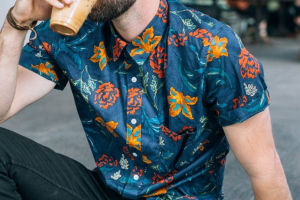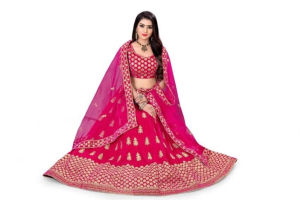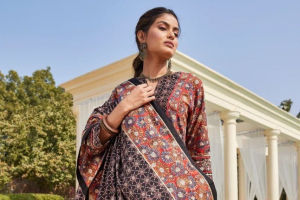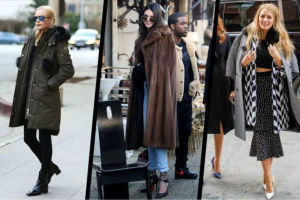Storytelling Through Style: How Narratives Shape Fashion Brands

The Art of Storytelling in Fashion
In the world of haute couture and high-street fashion, the power of a well-crafted story can be the difference between a memorable brand and one that fades into the background. Fashion branding isn't just about the clothes; it's about the stories they tell and the worlds they evoke. This post delves into how narratives shape fashion brands and why they are an essential tool in the industry.
Historical Perspective: Storytelling in Fashion Through the Ages
The art of storytelling in fashion is not a modern concept; it has been integral to human culture throughout history. In ancient civilizations, clothing often symbolized social status, profession, or tribal affiliation, each garment telling a story about its wearer. During the Renaissance, fashion became a medium to display wealth and taste, reflecting societal values and aesthetics of the era. In the 20th century, with the emergence of fashion designers as celebrities in their own right, the narrative took a more personal turn, reflecting the designer's vision and ethos.
Contemporary Examples of Narrative-Driven Fashion Brands
In today's fashion landscape, brands leverage storytelling to create a strong brand identity. For instance, Chanel continues interweaving Coco Chanel's legacy into its collections, telling a story of timeless elegance and female empowerment. Similarly, Dolce & Gabbana often incorporates Italian heritage and familial themes into their designs, celebrating Mediterranean culture. These brands do not merely sell clothes; they sell a story, a lifestyle, and a piece of cultural heritage.
The Role of Designers as Storytellers
Designers are the architects of a brand's narrative. They weave their personal experiences, inspirations, and visions into their collections. For example, Rei Kawakubo of Comme des Garçons is known for her avant-garde designs that challenge conventional notions of beauty and fashion. Her collections tell a story of rebellion and innovation. Designers like Kawakubo show that fashion is not just about clothing; it's a narrative medium as potent as any art form.
Components of a Compelling Fashion Narrative
Crafting a Unique Brand Story
The foundation of a compelling fashion narrative, much like a well-crafted essay from a narrative writing service like KingEssays, is a unique brand story. The foundation of a persuasive fashion narrative is a fantastic brand story. This story should resonate with the brand's target audience and differentiate the brand in a crowded marketplace. It could be a story of the brand’s origins, the designer’s journey, or a particular philosophy or vision that the brand embodies. For instance, Patagonia’s commitment to environmental sustainability is a central theme of its brand story, influencing its product design and company practices.
The Importance of Consistency in Visual and Thematic Elements
Consistency in visual and thematic elements is crucial in maintaining a cohesive brand story. It includes consistently using colors, patterns, logos, and motifs that align with the brand's narrative. For example, Louis Vuitton's iconic monogram is not just a logo; it's a symbol of the brand's long history of luxury travel goods. Consistency in these elements helps in building brand recognition and loyalty.
Integrating Cultural, Historical, and Personal Elements
Integrating cultural, historical, and personal elements into fashion narratives allows brands to connect with their audience more deeply. It could mean drawing inspiration from a particular culture or era or incorporating the designer's personal experiences and values into the brand's narrative. Gucci, under the direction of Alessandro Michele, is a prime example of a brand that successfully integrates historical references and personal creativity, resulting in eclectic and intensely personal collections. This approach makes the brand’s collections unique and gives them a sense of authenticity and depth.
Case Studies
Analysis of Successful Fashion Brands with Strong Narratives
Fashion brands with strong narratives often enjoy tremendous success and recognition. For instance, Burberry’s transformation from a classic British brand to a symbol of high fashion and innovation is a prime example. Their narrative revolves around British heritage, craftsmanship, and innovation. Another example is Versace, known for its bold, glamorous designs, which reflect the late Gianni Versace's love for Greek mythology and modern art.
How These Brands Weave Stories into Their Collections
Burberry often incorporates British motifs, such as the classic tartan pattern, into its designs, reinforcing its heritage narrative. Conversely, Versace frequently uses motifs like Medusa and golden baroque prints, subtly nodding to its narrative of opulence and Greek mythology. These elements are not just decorative; they are storytelling tools that reinforce the brand's identity in every collection.
Impact of These Narratives on Brand Identity and Customer Loyalty
The narratives of these brands significantly impact their identity and customer loyalty. Burberry’s rebranding as a contemporary yet quintessentially British label has attracted a younger, more fashion-forward demographic. Versace’s commitment to bold luxury continues to appeal to a clientele that values extravagance and statement-making pieces. The strong narratives foster a deeper connection with customers, who don’t just buy products but buy into the story and lifestyle the brand represents.
The Role of Marketing in Fashion Storytelling
Traditional vs. Digital Marketing Strategies for Narrative Branding
Traditional marketing strategies in fashion, like print ads and runway shows, have long been used to convey a brand's narrative. However, digital marketing strategies, such as social media storytelling and online campaigns, have become increasingly important. Digital platforms offer an interactive and direct way to engage with consumers, allowing brands to tell their stories more personally and engagingly.
The Use of Fashion Shows, Ad Campaigns, and Social Media
Fashion shows are not just about displaying new collections; they are theatrical presentations that bring a brand's narrative to life. Ad campaigns, especially those shot by renowned photographers or featuring compelling storytelling elements, further reinforce the narrative. Social media platforms like Instagram and TikTok have become invaluable for storytelling, allowing brands to directly share behind-the-scenes content, designer insights, and narrative-driven campaigns with their audience.
Collaborations and Celebrity Endorsements as Storytelling Tools
Collaborations with artists, designers, or other brands can introduce new narratives or add layers to existing ones. For example, Louis Vuitton's collaboration with the artist Jeff Koons was a fusion of art and luxury fashion, telling a story of creativity and exclusivity. Celebrity endorsements and partnerships also play a significant role in storytelling. When a celebrity with a distinct personal brand aligns with a fashion brand, it can amplify the narrative and reach different audiences. For instance, Rihanna's partnership with Puma brought the brand a new narrative of edgy, street-style luxury. These collaborations and endorsements are not just marketing tools but narrative devices that enhance the brand's story and appeal.
Challenges and Considerations
Balancing Creativity with Commercial Viability
One of the critical challenges in fashion branding is balancing creativity with commercial viability. Designers and brands often grapple with maintaining their unique narrative and artistic vision while ensuring their collections are marketable and appeal to a broad audience. This balance requires careful consideration of trends, consumer preferences, and the economic landscape while staying true to the brand's story and ethos.
Navigating Cultural Sensitivity and Authenticity
Cultural sensitivity and authenticity are paramount in fashion branding in our increasingly globalized world. Brands must be mindful of cultural appropriation and ensure their narratives and designs respect and honor the cultures they draw inspiration from. Authentic storytelling in fashion requires a deep understanding and appreciation of cultural histories and contexts, avoiding stereotypes, and engaging with cultures respectfully and meaningfully.
The Impact of Fast Fashion on Narrative-Driven Design
The rise of fast fashion poses a significant challenge to narrative-driven design. Fast fashion's emphasis on speed and low costs often dilutes storytelling in favor of rapidly changing trends and mass appeal. This model can overshadow traditional fashion brands' careful craftsmanship and rich narratives, making it harder for them to compete in a market driven by speed and price.
Future of Narrative in Fashion Branding
Emerging Trends and Innovations
The future of narrative in fashion branding is likely to see a blend of traditional storytelling with innovative approaches. We're already witnessing a rise in sustainability and ethical narratives as consumers become more environmentally conscious. Additionally, there's a growing trend towards personalization and co-creation, where customers have a say in the design process, further enriching the brand's story.
The Role of Technology in Storytelling (e.g., Virtual Reality, AI)
Technology is set to play a significant role in the evolution of fashion storytelling. Virtual Reality (VR) and Augmented Reality (AR) offer new ways for brands to immerse consumers in their narratives, creating interactive and engaging experiences. AI can help personalize these experiences and analyze consumer data to tailor narratives to individual preferences and histories.
Predictions for the Evolution of Narrative in Fashion
Looking forward, we can expect narratives in fashion branding to become more interactive, personalized, and immersive. Technology will enable brands to create more engaging and experiential stories, while sustainability and ethical practices will become integral parts of brand narratives. The fusion of traditional craftsmanship with innovative storytelling techniques will likely result in a new era of fashion branding, where narratives are told and experienced in multifaceted ways.
Conclusion
In conclusion, the narrative is a powerful tool in fashion branding. It's not just about the products; it's about the emotions, memories, and dreams they evoke. As the industry evolves, those brands that can tell the most compelling, authentic, and innovative stories are the ones that will stand the test of time. Storytelling through style isn't just an art form; it's the soul of the fashion industry.
About the author: Robin Talley is a seasoned content and essay writer at KingEssays with expertise in creating engaging narratives. With a background in English Literature, he leads a dynamic team of writers, fostering creativity and innovation. Outside work, Robin is an avid reader and enjoys nature hikes with his family.




